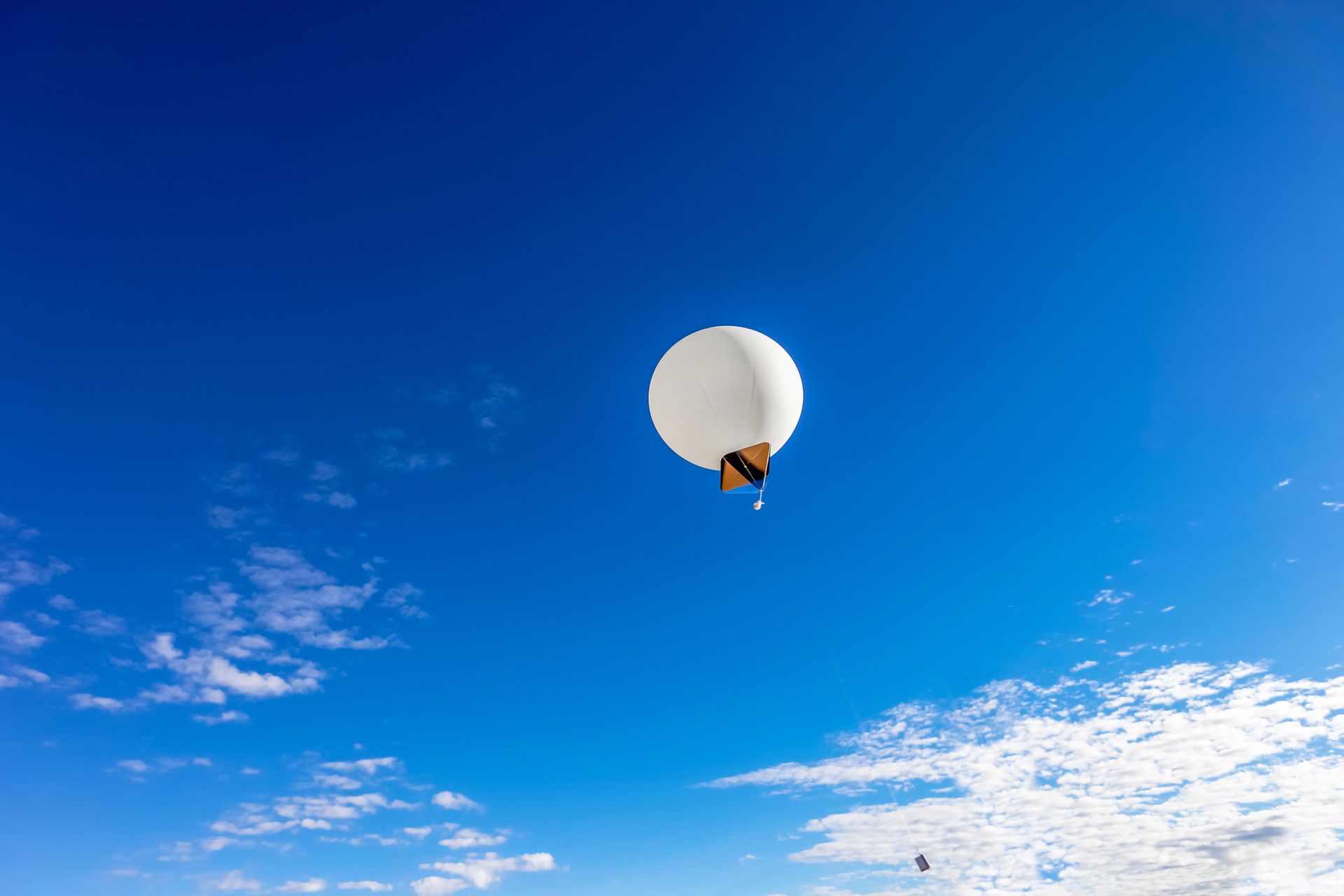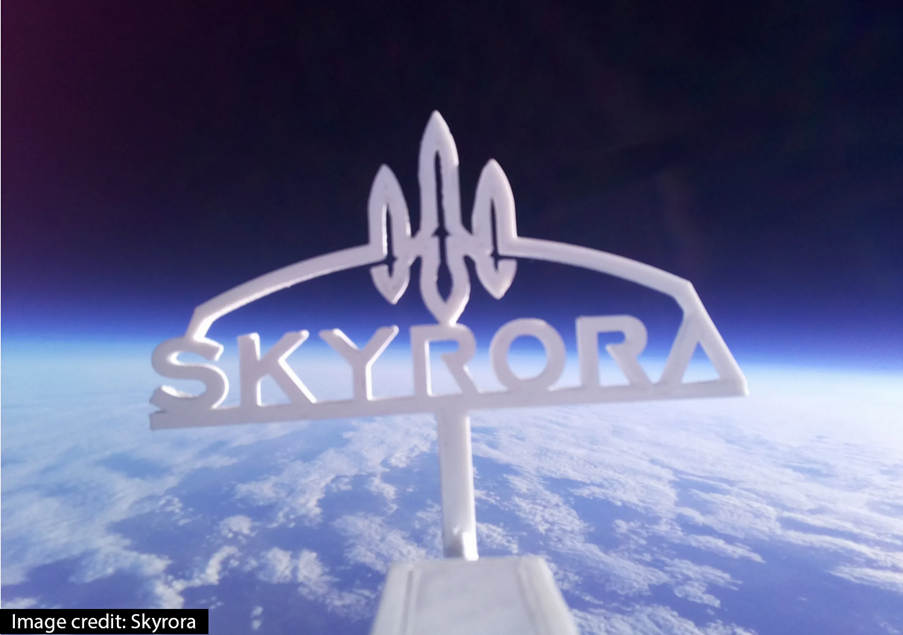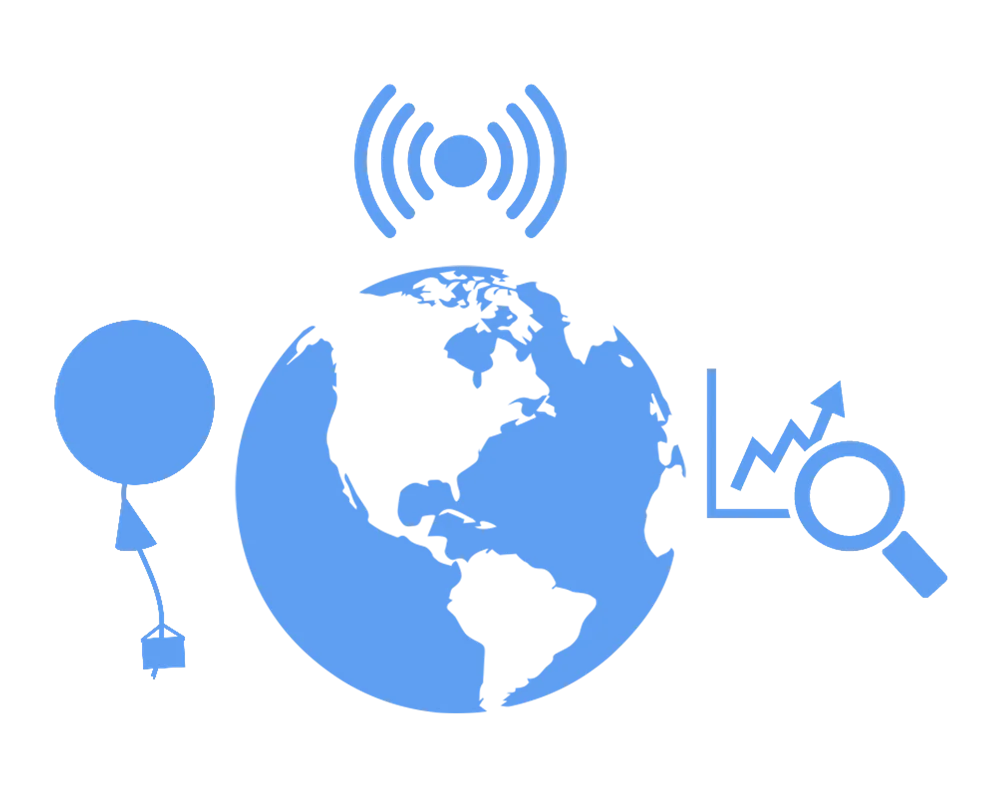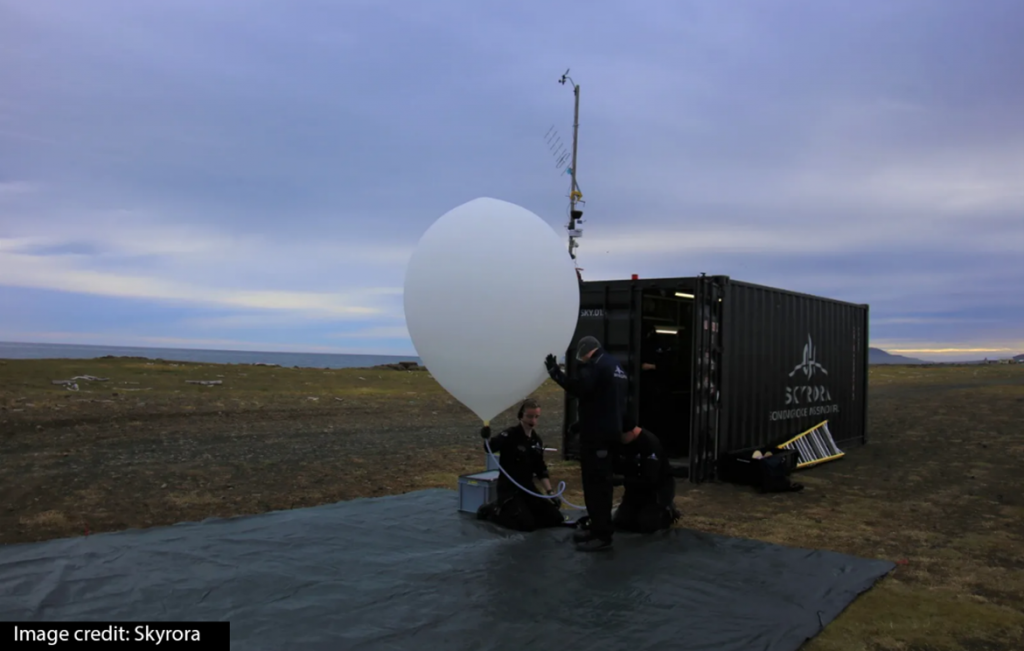Weather Balloons

What are weather balloons?
Weather balloons, or meteorological balloons, are a type of balloon typically made from latex or neoprene and filled with hydrogen or helium. They are designed to reach very high altitudes, sometimes as high as 40km, and used specifically for transporting scientific payloads into Earth’s upper atmosphere. Across the globe, hundreds of weather balloons are released every day to provide an insight into what is happening in our atmosphere.
How does a weather balloon work?
Giant weather balloons at the edge of space carry a radiosonde- a small device capable of taking accurate measurements of temperature, moisture, and wind, to name a few. Transmitters are used to send data correlating to each of these parameters by radio to a receiver on the ground. The weather balloon descends after collecting data, with the integrated parachute recovery system ensuring its safe return. Parts can then be repaired where necessary and re-used for future weather balloon launches.
With the weather balloon back on the ground, the information retrieved from the transmitter can be interpreted and used in the necessary context to make informed decisions, from local weather reports to preparation for a rocket launch. In the latter case, weather balloons are vital in ensuring the weather conditions will allow for a successful, low-risk launch.
The higher the weather balloon’s altitude reaches above the Earth’s surface, the more the balloon expands. The highly flexible material used in a typical weather balloon can expand to anywhere between 2 and 8 metres wide. When it reaches a high enough altitude, the very low air pressure (which can be as low as 0.01% of the air pressure on the Earth’s surface) means the balloon will eventually burst.
Weather balloon facts: the history
According to High Altitude Science, French meteorologist Leon Teisserenc de Bort was one of the first documented to be actively launching weather balloons. Having mastered the launch of weather balloons as early as 1896, Leon Teisserenc de Bort’s work was ‘instrumental in the discovery of the tropopause and the stratosphere’. Teisserenc de Bort has been honoured for his work with a crater on both the Moon and on Mars named after him.
Later, in the 1900s, Alfred Wegener discovered the Continental Drift Theory by using weather balloons to perform experiments. Despite publishing the theory in 1912, there were many disagreements towards the findings, and it was only in 1960, 30 years after his death, that this theory was accepted.
Nowadays, the proven technology dating back to these times means that the use of weather balloons is common practice. As they are used more widely the purposes of their missions are becoming more creative, and with cameras attached to the payload we can capture these exciting moments at the edge of space, such as this one seen below, launched by Skyrora’s interns!

Why do we need them?
One of the most accurate and accessible ways to obtain atmospheric data is with the use of weather balloons. The Met Office currently launches more than 4300 weather balloons every year from various locations across the UK. The data taken from these weather balloons is essential to the Met Office for delivering their data to the UK’s Public Weather Service (PWS). Weather data, from regular daily updates to warnings of severe weather conditions, is relied upon to help businesses, emergency services, and the public to plan ahead.
Its uses do not end here. Weather data, obtained by weather balloons and analysed on the ground, plays a significant role in the launch missions of companies within the UK and global space sector. When launching rockets such as Skyrora’s orbital vehicle, Skyrora XL , it is essential that we know the nature of the weather conditions at the altitudes being travelled to, from the Earth’s surface all the way to the edge of space. The vertical wind profile, simply put the wind at altitude above the ground, must be within the safe limits required for launch, especially nearing the expected launch time.

When planning and preparing for a launch mission, a launch window must be decided which will be a period, usually several days, over which the weather is deemed suitable to carry out a low-risk launch. Close attention will be paid to wind speed and direction to identify the possible effects of these parameters on the success of the rocket launch mission as it travels to the desired orbit.
How does Skyrora do it?
At the beginning of 2020, Skyrora carried out its first successful weather balloon launch. Test launches were conducted in Penicuik, in the centre of Scotland, and the successful launch marked the beginning of the company’s capabilities to use Skyrora’s own weather balloons to monitor weather parameters such as the wind profiles, with the help of GPS data, at varying heights above the ground. Read about this here.

Over the years Skyrora has launched many weather balloons. For example, in August 2020, Skyrora launched the sub-orbital Skylark Micro rocket from Iceland. Here multiple weather balloons were launched, and the results used to determine the wind conditions, relative humidity, atmospheric pressure, and temperature at altitudes that would be important during the mission.
The payload tasked with taking these measurements must be carefully designed to withstand the conditions it is exposed to during the weather balloon mission. With the technical ability to carry out regular successful weather balloon missions and flights typically lasting only a few hours, Skyrora will be capable of launching weather balloons at the site of future launches, ensuring the data is accurate immediately before flight and increasing the chances of a low-risk, successful launch. With the launch of Skyrora XL, the innovative third stage technology, and sustainable Ecosene fuel, Skyrora can provide an accessible, eco-friendly end-to-end launch service for small satellites customers, looking to reach their desired destination.
References
1. High Altitude Science. (2022). Intro to Weather Balloons. Last accessed 25/05/22.
2. Met Office Press Office. (2017). Did You Know? We’re testing new weather balloons: from Cornwall to Antarctica! Last accessed 25/05/22.
3. Basic Air Data. (2022). Introduction to Weather Balloons. Last accessed 25/05/22.



